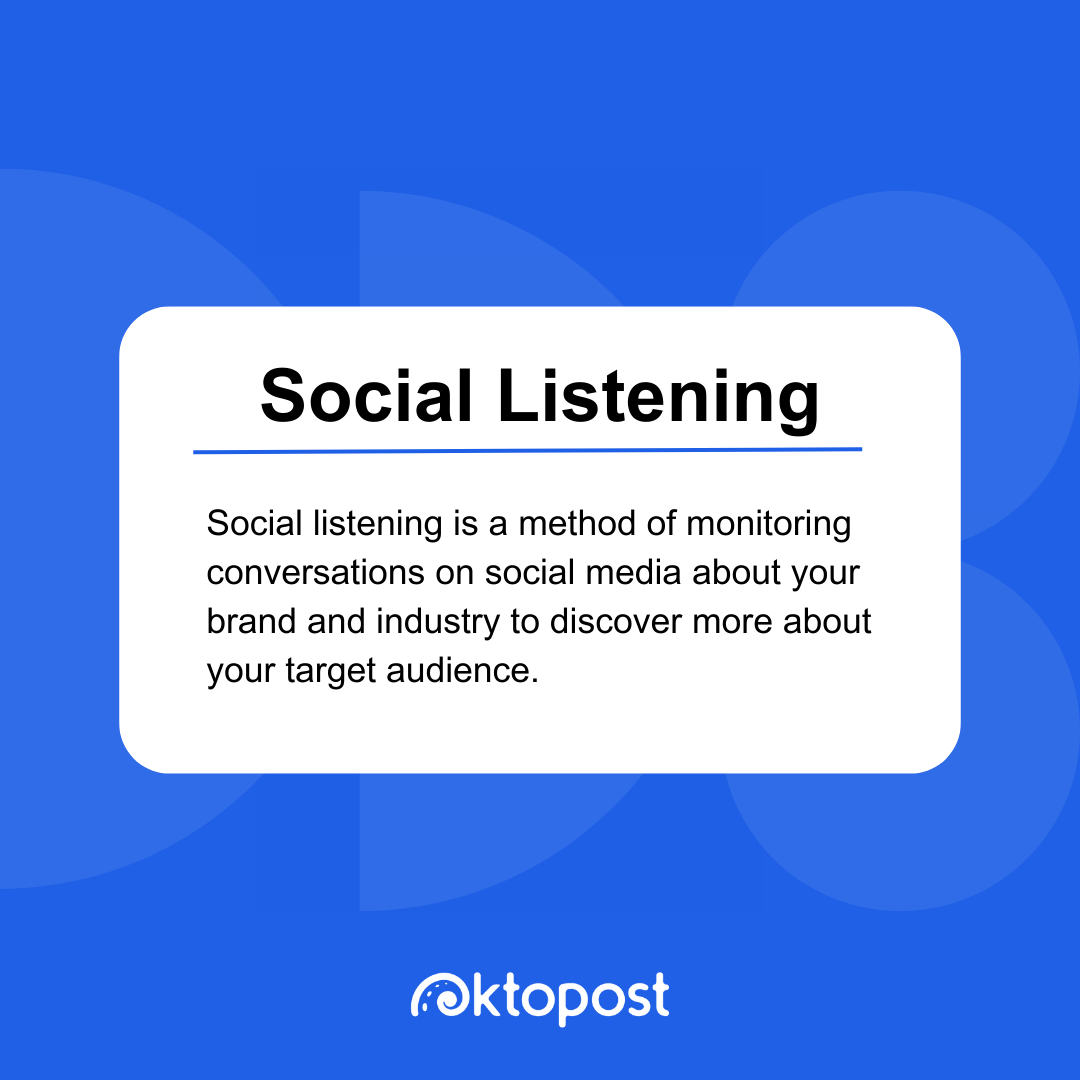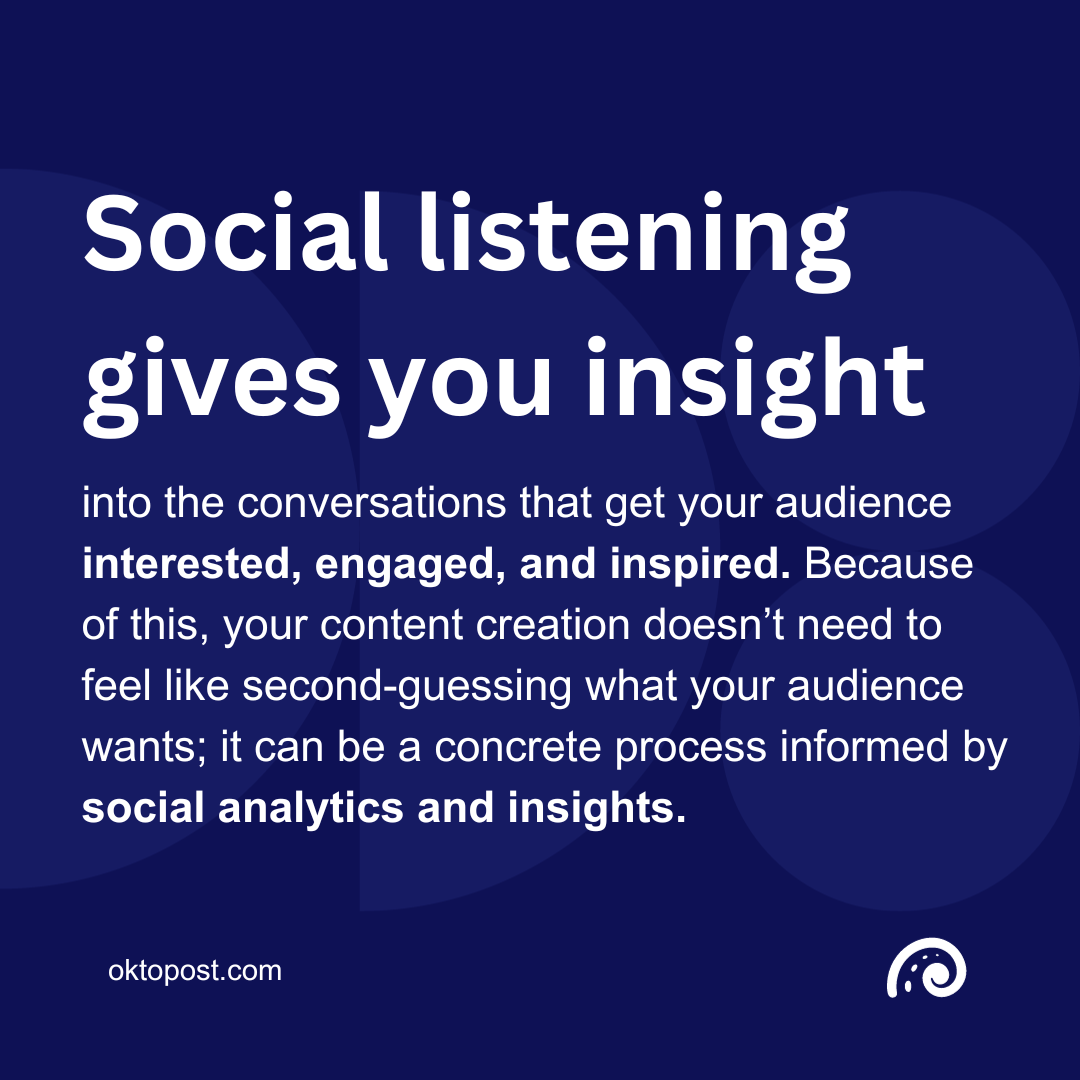
[ad_1]
If you’ve ever played the game ‘telephone’ as a child, you know that it’s not just about the conversation taking place but picking up on the right insights. This lesson extends far beyond childhood games into the real world of social listening. There are millions, perhaps even billions, of conversations taking place on social media each day. However, the trick is not listening to everything at once but being able to clue in on important messaging that impacts your brand.
Using social listening to pick up on conversations from your industry and competitors can be the difference between leading the market and playing catch-up. However, not all social listening is created equal, especially when comparing the needs of B2B and B2C organizations. Let’s dive into why social listening in a B2B context isn’t just helpful—it’s essential, and how it differs fundamentally from its B2C counterpart.
Jump to…
Social listening and its B2B significance
B2B social listening challenges
5 Steps to create a B2B social listening framework
B2B social listening benefits
Features needed in a B2B social listening tool
The essential need for B2B-specific social listening tools
Social listening and its B2B significance
At its core, social listening involves monitoring online conversations to understand what customers say about a brand online. This includes tracking mentions across social media platforms, forums, and the web using relevant hashtags, keywords, and more. While both B2B and B2C companies use social listening to glean insights, the application and outcomes sought can differ significantly.
B2B organizations face unique challenges and opportunities that require a tailored approach to social listening, driven by the complexity of their sales cycles, the nature of their relationships, and the specificities of their target audiences.

B2B social listening challenges
Lengthy sales cycles
Raise your hand if you’ve bought a pair of shoes online because you saw them posted on Instagram. For the B2C world, such whim decision-making is fairly typical.
Unfortunately, the same is not true in B2B. While we might dream that our leads instantly purchase our SaaS platform due to one single social post, we know such occurrences are incredibly unrealistic. After all, our products and services are more of an investment and must solve specific challenges better than our competitors to land a sale.
As such, B2B sales cycles are often prolonged, involving multiple stakeholders and decision-makers. Social listening can identify where a potential client is in their decision-making process and what information they might need, facilitating timely and relevant engagement.
By monitoring these conversations, you can understand what challenges they want to solve with your product or service and how to best approach them with a solution that fits their needs.
Niche conversations
The conversations relevant to B2B companies can be highly specialized, occurring in specific forums, industry publications, or within certain professional groups online. These conversations are incredibly impactful for your typical B2B buyer, as research shows that more than 92% of B2B buyers will purchase a product or service after reading a review from a peer.
Besides review websites, these conversations occur most often on Social media. Social listening lets you stay on top of what your customers say about your brand online, so you can leverage online chatter about your offerings to boost your credibility and drive more sales.
Reputation and relationships
B2C buyers want as little friction in their buying cycle as possible. When you’re looking for new shoes, you want to see that they are comfortable and look good–that’s it. You definitely don’t need to have a personal connection to the seller.
In contrast, for B2B organizations, reputation, and long-term relationships hold significant weight. Social listening helps monitor sentiment and feedback, allowing companies to address concerns and nurture these critical relationships proactively.
5 Steps to create a B2B social listening framework
The first step in leveraging social listening for your B2B organization is to create a framework for your success. By following a structured B2B social listening framework, you can leverage the power of social conversations to gain a deeper understanding of your market and make informed decisions for your business. Start by defining the following parameters:
1. Set your goals
Are you using social listening to increase your reach with influencer marketing, improve your brand reputation, or something else entirely? This will impact the strategy you create and how you approach social listening.
2. Choose your social listening channels
Is your audience on X, LinkedIn, or someplace else entirely? By understanding where your audience engages most, you can set up social listening on the most impactful networks for your brand.
3. Set up social listening tools
Now that you know your goals and the channels you want to listen in on, it’s time to set up your social listening tools to track the keywords, hashtags, and online conversations that matter most to your organization.
4. Collect and analyze data
What is your audience chatting about and what insights can you glean from their online conversations? Once you set up your social listening tools, you’ll need to use the data you collect to meet the goals you set up for your social listening strategy.
5. Take action
Was your audience expressing their desire to achieve a specific goal that you can address with a new feature? Were they chatting about a problem you can solve with your product? Now is the time to connect with your audience, jump in on relevant conversations, and use their experiences to improve your offerings.
As you create your B2B social listening framework, remember to always make sure you’re searching for relevant terms for your industry, extend your focus beyond traditional social media channels (Reddit can provide a goldmine of insights, for example), and listen to industry influencers to get a feel for what your audience is looking for.

B2B social listening benefits
Obtaining market research
Market research can get expensive. However, getting a feel for where your brand stands in the market is easy and free through social listening. Market research through social listening offers a streamlined and cost-effective way for businesses to gain insights into their audience, industry trends, and competitive landscape.
By analyzing online conversations about your brand and sector, you can quickly identify customer preferences and emerging trends, understand key social media metrics, and identify areas for improvement. This real-time data allows for rapid, informed decision-making, enabling your business to adapt to market demands.
Understanding your customers
Did you know that only 42% of marketers know basic demographic information about our audience? Often, we make assumptions about our customers. But the easiest way to challenge our biases and truly get to know our customers is by using social listening to analyze what makes them tick.
Social listening lets you see what they’re chatting about online, helping you create detailed buyer personas that outline specific challenges, needs, goals, and more. This enables you to create marketing campaigns that forge deep relationships with each buyer, driving their loyalty for years to come.
Protecting your brand
Trust us, a social media crisis is something you want to avoid at all costs. Social listening can help you detect a potential social media crisis before it arises, enabling you to notify the right people within your organization and fix it before it becomes a more significant issue.
Getting honest product feedback
Are you missing a new feature that could radically change everything for your customers? Was the last feature you released useful to your customers, or are there UX issues getting in the way?
Using social listening can help you understand which features benefit your customers, which are less impactful, and which features you should put on your product roadmap.
Competitor analysis
Social listening for competitor analysis equips your business with valuable insights and social data analysis, enabling a deeper understanding of your competitors’ strategies, customer engagements, and market positioning.
By watching your rivals’ social media mentions and conversations, you can discern your organization’s strengths and opportunities for differentiation.
Identifying the right influencers
69% of consumers trust influencers, family, or friends over brands. Using social listening to identify B2B influencers helps pinpoint key industry voices who can amplify your brand’s reach and credibility.
Analyzing social conversations and content engagement can uncover influential figures within your target market. This enables strategic partnerships and influencer collaborations, leveraging their authority to enhance your brand’s visibility and trust among professional audiences.
Features needed in a B2B social listening tool
Advanced filtering
To sift through the vast amount of online chatter and find the conversations that matter, B2B social listening tools need sophisticated filtering capabilities. This includes industry-specific keywords, competitor mentions, and targeted geographical locations.
Audience targeting
Tracking conversations by specific demographics is crucial for tailoring your go-to-market strategy effectively. It allows your business to understand varying sentiments and preferences across different segments so you can personalize marketing messages and targeted product offerings.
This enhances customer engagement and illuminates market opportunities and challenges within each demographic. Adopting this approach allows you to allocate resources more efficiently, anticipate market trends, and ensure your strategy resonates with your intended audience.
Influence and decision-maker identification
Identifying key influencers and decision-makers within target organizations is crucial for B2B companies. A dedicated tool should be able to monitor mentions and map out the network of influence around these individuals.
Sentiment analysis
Understanding the sentiment behind mentions is particularly important for B2B companies, where a single negative review or comment from a prominent industry figure can have significant implications. Advanced sentiment analysis helps quantify and address these sentiments effectively.
Sharable reports
Sharing social listening reports across your team is crucial for aligning everyone on the latest social conversations and social media trends. These reports compile key insights about your brand’s online presence, competitive landscape, and industry shifts, ensuring that all departments—from marketing to product development—are informed and in sync. This facilitates strategic decision-making and fosters collaboration, enabling your team to respond cohesively to market changes.
The essential need for B2B-specific social listening tools
Given the distinct challenges and needs of B2B organizations, generic social listening platforms often fall short. A specialized B2B social listening tool is not just a luxury but a necessity. It enables companies to dive deeper into the conversations that matter most, uncover otherwise overlooked insights, and engage with their audience more meaningfully.
Ultimately, the right tool empowers B2B companies to stay ahead in a competitive landscape where understanding and responding to digital conversations can make all the difference.
While social listening is a valuable strategy for any business, B2B organizations require specialized tools tailored to their unique needs. By leveraging a B2B-specific social listening tool, companies can navigate the complex web of digital conversations, identify valuable insights, and build stronger, more informed relationships with their clients and industry peers.
Learn how Oktopost can help your B2B organization leverage the benefits of B2B social listening.
[ad_2]
Source link